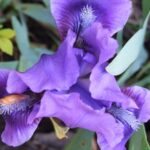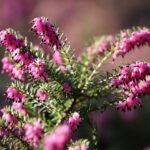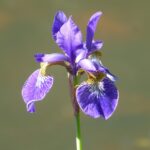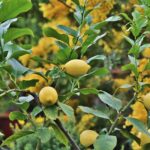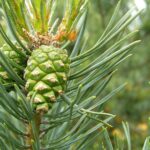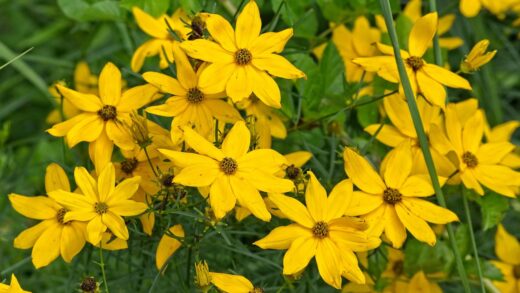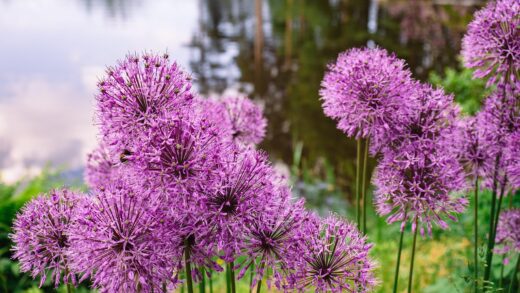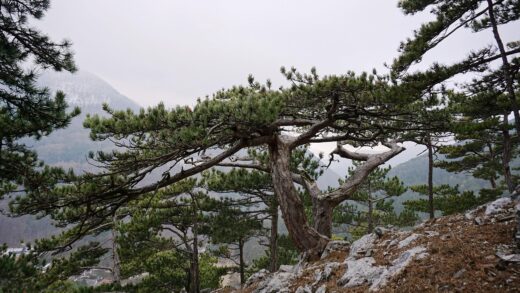Pruning is a vital horticultural practice that, when performed correctly and with a clear purpose, can significantly enhance the health, structure, and aesthetic appeal of a Golden Rain Tree. While this species does not require constant or intensive trimming, strategic pruning at key stages of its life is crucial for developing a strong, resilient framework and maintaining its safety and beauty in the landscape. The wood of the Golden Rain Tree is known to be somewhat brittle, making it susceptible to damage from wind, snow, and ice. A proactive pruning program, especially during the tree’s youth, can mitigate this weakness by establishing a dominant central leader and well-spaced, strongly attached scaffold branches. For mature trees, pruning shifts to a maintenance role, focusing on the removal of dead or problematic wood to preserve the tree’s health and prevent potential hazards. A thoughtful approach to pruning is an investment in the tree’s longevity and its continued contribution to the garden.
The natural growth habit of an unpruned Golden Rain Tree often includes the development of multiple competing leaders and branches with narrow, weak angles of attachment to the trunk. This structure, known as co-dominant stems, is inherently weak because the branches do not have a proper connection with the trunk and often have included bark, which prevents the wood from fusing together properly. These weak unions are common failure points during storms. The primary goal of structural pruning is to correct these tendencies early in the tree’s life, guiding it to form a more durable and stable architecture that will serve it well as it matures and increases in size and weight.
Beyond structural integrity, pruning also plays a role in the overall health of the tree. By selectively thinning out crossing or crowded branches, the gardener can improve light penetration and air circulation throughout the canopy. Increased sunlight reaching the interior leaves enhances the tree’s photosynthetic capacity, while better air movement helps the foliage dry more quickly, reducing the incidence of fungal diseases like leaf spot. The removal of dead, damaged, or diseased wood—a practice often referred to as “crown cleaning”—is a fundamental aspect of tree maintenance that eliminates potential entry points for decay organisms and insect pests.
It is equally important to understand what pruning cannot do. Pruning cannot make a tree that is planted in a shady location flower more, nor can it permanently keep a large tree confined to a small space without destroying its natural form and health—a destructive practice known as “topping.” Pruning should always be done with respect for the tree’s natural shape and growth habit. The goal is to enhance the tree, not to fight against its inherent character. Using the right techniques and making the right cuts at the right time are key to achieving this positive outcome.
Objectives of pruning the golden rain tree
The primary objective when pruning a young Golden Rain Tree is to establish a strong and sound structure. This involves selecting and promoting a single, upright central leader to be the main trunk of the tree. Any competing leaders that are similar in size and are growing vertically should be shortened or removed entirely to prevent the formation of weak co-dominant stems. The next step is to select the main scaffold branches—the primary limbs that will form the tree’s permanent framework. These branches should be well-spaced both vertically and radially around the trunk, like spokes on a wheel, to ensure a balanced and stable canopy.
More articles on this topic
A second key objective of pruning is to maintain the health of the tree throughout its life. This is achieved by regularly removing what arborists call the “three D’s”: any wood that is dead, damaged, or diseased. Dead branches serve no purpose and can be a host for insects and decay fungi. Damaged or broken branches are not only unsightly but also create wounds that can be entry points for pathogens. Diseased wood, such as branches with cankers, must be removed promptly to prevent the spread of the infection to other parts of the tree. This type of maintenance pruning is essential for all trees, regardless of their age.
Pruning is also used to manage the tree’s interaction with its surroundings, which relates to safety and clearance. As a Golden Rain Tree grows, its lower branches may begin to interfere with pedestrian traffic on a sidewalk, obstruct a view from a window, or make it difficult to mow the lawn underneath. In these cases, the objective is to “raise the crown” by selectively and gradually removing the lowest limbs to provide the necessary clearance. This should be done over a period of several years rather than all at once to avoid removing too much of the tree’s foliage at one time.
Finally, pruning can be performed for aesthetic reasons, to enhance the natural beauty of the Golden Rain Tree. This might involve thinning the canopy slightly to create a more open, airy appearance or removing a awkwardly placed branch that detracts from the tree’s overall form. However, aesthetic pruning should be done with a light touch. The goal is to make subtle improvements that refine the tree’s shape without making it look artificially manicured. The best aesthetic pruning is often the kind that is not immediately obvious to the casual observer.
The best time of year to prune
The timing of pruning is a critical factor that can influence the tree’s response and its overall health. For most types of pruning on a Golden Rain Tree, especially major structural work and the removal of large branches, the ideal time is during the dormant season. This period, which runs from late autumn after the leaves have dropped until very early spring before the buds begin to swell, offers several distinct advantages. Without leaves, the branch structure is clearly visible, making it much easier to identify problems and make well-informed pruning decisions.
More articles on this topic
Pruning during dormancy is also less stressful for the tree. In the winter, the tree’s metabolic activity is at its lowest, and it is not actively trying to grow or produce food. Making cuts at this time allows the tree to use its stored energy reserves to begin the process of sealing the wounds as soon as growth resumes in the spring. Furthermore, the risk of transmitting certain diseases, particularly those that are spread by insects, is much lower in the cold winter months when both pathogens and their insect vectors are inactive.
While winter is the best time for most pruning, there are exceptions. The removal of dead, damaged, or diseased branches can and should be done at any time of year as soon as they are noticed. A broken branch is a hazard and a potential entry point for decay, and there is no benefit to waiting until winter to remove it. Similarly, diseased wood should be removed promptly to prevent the pathogen from spreading further into the tree.
Minor trimming and the removal of small, wayward shoots or suckers can also be done during the summer growing season. However, it is important to avoid heavy pruning in the summer, as removing a large amount of foliage can reduce the tree’s ability to photosynthesize and can create stress, especially during hot, dry weather. It is also crucial to avoid pruning in the late summer or early autumn, as this can stimulate a late-season flush of new growth that will not have time to harden off before winter, making it susceptible to frost damage.
Formative pruning for young trees
Formative pruning during the first five to seven years of a Golden Rain Tree’s life is the most important pruning it will ever receive. The small cuts made on a young tree will have a profound and positive impact on its future structure, preventing major problems that would require the removal of large limbs later in life. The primary goal during this period is to establish and maintain a single central leader. If you see two or more stems competing for dominance, select the strongest, straightest, and most centrally located one to be the leader and shorten the others (subordinating them) or remove them entirely.
The next step is to develop a strong scaffold system of branches. These are the main branches that will grow directly from the trunk. Ideally, you want to select permanent scaffold branches that are spaced about 30 to 45 centimeters apart vertically along the trunk and are distributed in different directions around it. Avoid allowing several major branches to originate from the same point on the trunk, as this creates a weak spot. Branches that have wide, U-shaped angles of attachment to the trunk are much stronger than those with narrow, V-shaped angles, which are prone to splitting. Remove or shorten branches with weak attachments.
During these early years, you should also remove any branches that are growing back towards the center of the tree, those that are crossing or rubbing against other branches, and any suckers that arise from the base of the trunk or roots. The goal is to create an open framework with well-spaced branches that will not compete with each other for light and space as they grow. This formative pruning should be done gradually, over several years. A good rule of thumb is to never remove more than 25% of the tree’s living canopy in a single year.
It is also during this time that you can begin to “limb up” or raise the crown of the tree if necessary for clearance. This involves removing the lowest temporary branches. This should also be a gradual process. Leaving some of the lower branches in place for a few years, even if you plan to remove them later, can help the trunk to develop a proper taper and become stronger. By the end of this formative pruning period, the tree should have a well-established leader and a strong, well-distributed set of scaffold branches that will serve it for the rest of its life.
Maintenance pruning for mature trees
Once a Golden Rain Tree has reached maturity and has a well-established structure, the focus of pruning shifts from training to maintenance. The need for pruning becomes much less frequent, perhaps only every few years, and the primary goal is to keep the tree healthy and safe. The most important maintenance task is to conduct a regular inspection of the tree to identify and remove any dead, damaged, or diseased wood. This “crown cleaning” is the foundation of mature tree care and helps to prevent the spread of decay and reduce the risk of falling branches.
During your inspection, look for branches that are rubbing against each other. Over time, the friction from rubbing can wear away the bark, creating wounds that can become entry points for diseases. When you find two rubbing branches, the best course of action is to remove one of them completely, choosing the one that is in the worse position or is less healthy. You may also want to selectively thin out some smaller branches in areas where the canopy has become overly dense, to improve light and air circulation.
As a tree ages, it may produce water sprouts (vigorous, vertical shoots that arise from branches) or suckers (shoots that arise from the trunk base or roots). These should generally be removed as they appear. They are often weakly attached and can disrupt the tree’s intended form. They also divert energy from the main parts of the tree. These can typically be removed easily with hand pruners at any time of year.
When pruning a mature tree, it is crucial to use proper cutting techniques to allow the tree to heal effectively. All cuts should be made just outside the branch collar—the slightly swollen area where the branch joins the trunk or a larger limb. The branch collar contains specialized tissues that are responsible for closing over the wound. Cutting flush with the trunk or leaving a long stub will both impede this healing process and can lead to decay. For large, heavy branches, always use the three-cut method to prevent the branch from falling and tearing the bark. If the pruning job requires climbing or the removal of large limbs, it is always best to hire a certified professional arborist.
📷 Flickr / Szerző: Plant Image Library / Licence: CC BY-SA 2.0








